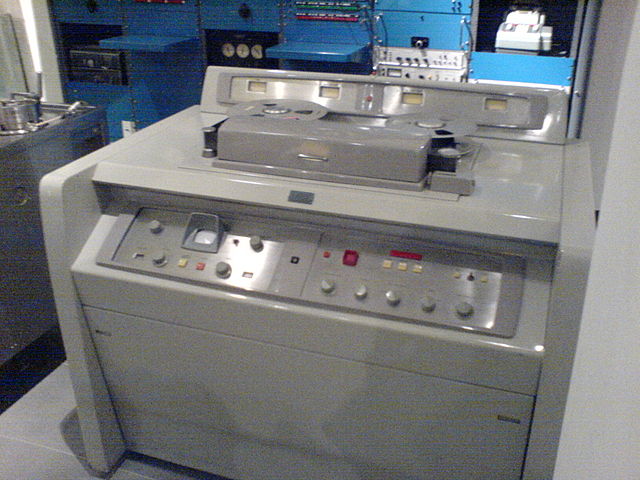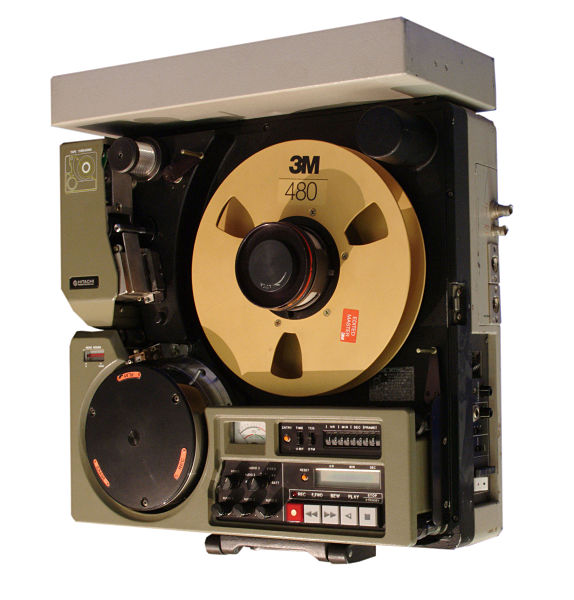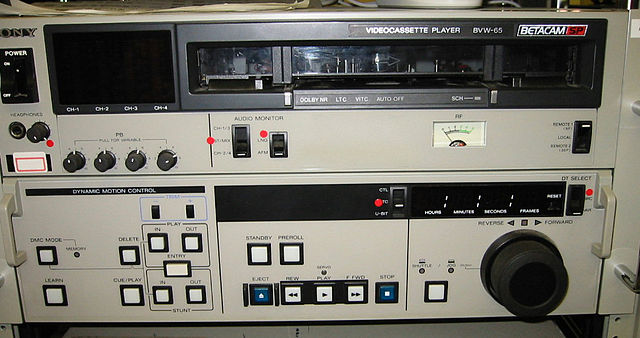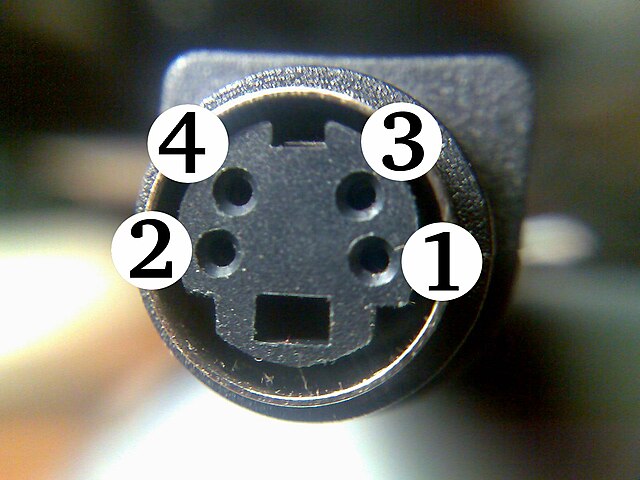A video tape recorder (VTR) is a tape recorder designed to record and playback video and audio material from magnetic tape. The early VTRs were open-reel devices that record on individual reels of 2-inch-wide (5.08 cm) tape. They were used in television studios, serving as a replacement for motion picture film stock and making recording for television applications cheaper and quicker. Beginning in 1963, videotape machines made instant replay during televised sporting events possible. Improved formats, in which the tape was contained inside a videocassette, were introduced around 1969; the machines which play them are called videocassette recorders.
AMPEX quadruplex VR-1000A, the first commercially released video tape recorder in the late 1950s; quadruplex open-reel tape is 2 inches wide
The first "portable" VTR, the suitcase-sized 1967 AMPEX quadruplex VR-3000
1976 Hitachi portable VTR, for Sony 1" type C; the source and take-up reels are stacked for compactness. However, only one reel is shown here.
Sony Betacam-SP VTP BVW-65 VTR
Video is an electronic medium for the recording, copying, playback, broadcasting, and display of moving visual media. Video was first developed for mechanical television systems, which were quickly replaced by cathode-ray tube (CRT) systems, which, in turn, were replaced by flat-panel displays of several types.
Composite video (single channel RCA)
S-Video (2-channel YC)
Component video (3-channel YPbPr)
SCART








